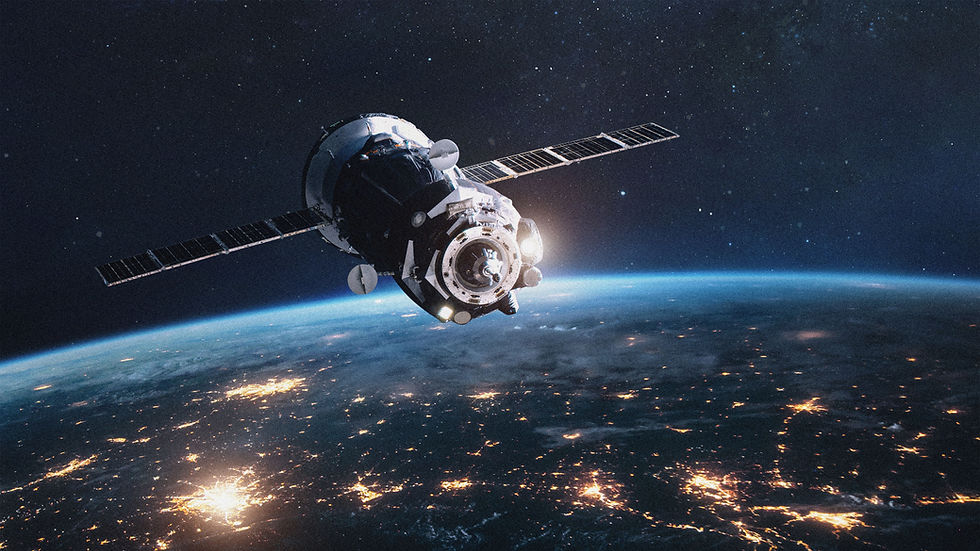The Gravity of Medicine in Space
- Amanda Grodman

- Aug 1, 2023
- 3 min read
Since the first Apollo missions, scientists and doctors alike have expressed concern about the effects of space on human health, especially when considering the amount of radiation, various consequences of zero G, and emotional challenges that burden the human body. However, these concerns haven't stopped space corporations from sending humans to space, given the ongoing Artemis missions and great potential for space tourism. What makes it safe for humans to travel such distances, especially given the effects of zero gravity on the body, how might physicians be demanded in an orbital environment, and what research has been conducted to allow for such? Like many components of space, the true impact of space on the human body may never be fully dissected–yet doctors are keen on researching potential impacts to ensure the safety of future space-goers.

Scientists first recognized the potential health concerns brought spurred by space travel after some astronauts who returned from the Apollo missions contracted unusual illnesses, including chickenpox. Others faced consistent congestion due to exposure to lunar dust on the Moon's surface, and bone problems remained common. Early research using "blood samples exposed in microgravity" found that Treg cells–a type of immune cell–were hyperactive upon stimulation, thus causing weakened immunity and leaving astronauts with lowered immunity after return (USCF). In addition, other early space medicine research on Skylab (the first U.S. space station) looked at the impact of space on the body during missions, but the full consequences–ranging from height loss to blindness–may have been unprecedented in the first years of space travel. Current studies explore the long-term cellular and molecular effects of spaceflight, namely the degeneration of back disks and absence of osteoblasts (reparative bone cells) and how the frequency of perivascular space ("space around blood vessels") increases in first-time fliers (Robinson, 2022). However, most health-related research in space has been for the benefit of those on Earth, from the development of prosthetics to unique disease therapies.

As evident from previous and ongoing research studies, having oncologists, microbiologists, immunologists, and other doctors examine the effects of space on health is critical in ensuring a safe recovery upon return. However, with the growing number of space-goers, will on-board doctors be necessary? Currently, astronauts assigned to missions are simultaneously paired with a "Flight Surgeon," or a physician that conducts regular assessments (by virtual means). Although helpful in daily situations, this method of treatment can pose difficulties in emergencies or when physical evaluation is needed. Recent studies have looked at implementing artificial intelligence (AI) technologies that will constantly monitor an astronaut's vitals by having them wear light-weight, detective clothing, but extensive testing of these possibilities is also crucial. Moreover, the accessibility of space travel given the unique predispositions of humans may pose difficulties in space tourism. Considering that astronauts must undergo constant physical maintenance before and during their missions, it may be challenging to expand space travel to the public without further consideration of the short and long-term effects. For now, additional studies on the effects of health in space–as well as consideration of implementing medical professionals on longer missions–will help to guide medicine to distant frontiers.

In this episode of “Let’s Go to Space: BLUESKY Learning,” Episode 121: The Luxury of 1G with Dr. Shawna Pandya, we meet with Dr. Shawna Pandya, a multi-talented physician, scientists, aquanaut, and–most strikingly–an astronaut candidate. Dr. Pandya discusses her diverse experiences in multiple roles and how interactions between medicine and space are needed now more than ever, given the growing number of people that will become astronauts or space tourists. Moreover, she discusses her experiences as an astronaut candidate and how her experiences as a physician have given her a unique perspective in the space realm. Dr. Pandya leaves us with inspirational advice–and encourages all students to reach for the stars in their own way. Learn more about Dr. Shawna Pandya and how medicine and aerospace unite, or visit our other weekly podcasts to hear from other speakers, by clicking the link above. Also make sure to check out our website to learn more about becoming a member of the Aerospace and Innovation Academy, where you can join us in our quest to go to space.




Comments